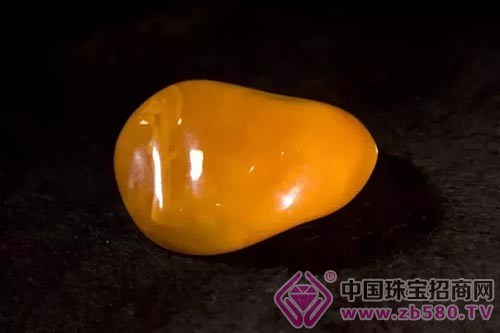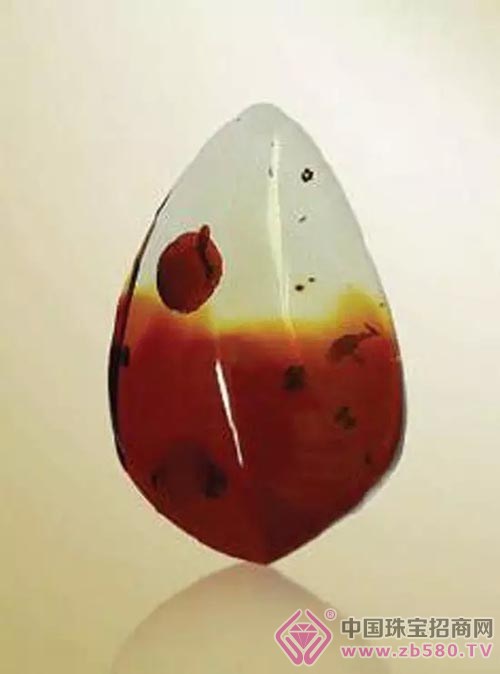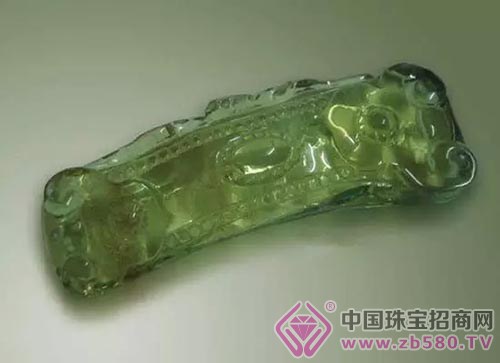First, organic gemstone - amber Amber is a petrochemical natural resin with a low hardness and can be easily scored with a knife. It is also the lightest type of known gemstone. At present, the classification of amber in the Chinese market is first divided into two categories according to transparency: the transparent one is called amber; the micro-transparent-translucent commonly known as beeswax; the transparent amber and the micro-transparent beeswax are called gold twist honey. Amber and pearls, corals are known as the three organic gemstones, with decorative value and collection value. Amber is also regarded as a sacred object by the Buddhist community. It is listed as a Buddhist seven treasure together with gold, silver, pearls, corals, dragonflies and glazes, and has a high cultural value. 80% to 90% of the world's amber is produced in countries along the Baltic coast. Baltic amber is golden in color, crystal clear and of good quality, suitable for jewelry. In addition, there are also amber output in Dominica, Myanmar and Fushun in China. Due to the high value and large quantity of amber, it has become the main target of optimization technology. According to the survey, the domestic amber raw materials are mostly Baltic honey beeswax varieties with low yellow transparency, while the market is commonly found in Jinpo, Xuebo, Greenpe, Jinhuapo, Honghuapu, two-color amber and pearl honey. Many beeswax varieties such as old beeswax. Second, the traditional optimization process technology of amber There is very little research data on amber optimization at home and abroad, and it is only slightly recorded in some related books on amber: Zhang Lili mentioned in System Gemmology that heating amber in vegetable oil can increase the transparency of amber, and using this method can also make amber produce "sun rays"; Zhang Hongbao wrote in the book "The Bohai Jade and Fine Saying Amber" that the Soviet company Almazjuvelirexport has developed a process that can change the hardness and color of amber. The pressure cooker is used to increase the transparency of amber, and then the electronic pot is used to heat the amber to increase its hardness. Deepen its color; Williamson George pointed out in The Book of Amber that placing amber in a hot iron pan and slowly heating it for 30 to 40 hours can change the color of amber to a dark brown or even black color. Although the method of using vegetable oil and fine sand to heat amber can achieve certain optimization effects, it is not suitable for large-scale commercial production, and the production of "sun rays" is also uncontrollable, and the use of hot oil brings safety risks. In contrast, Almazjuvelirexport's optimization method is more scientific, but this method separates the purification process from the baking process, and does not allow the two optimization processes to proceed simultaneously. Third, the modern commercial optimization process technology of amber At present, in the commercial production of amber at home and abroad, most of the optimization process is realized by an amber pressure furnace. The optimization process takes place in a sealed furnace chamber. The technician controls the pressure by adjusting the amount of gas that is fed into the pressure furnace. The temperature control is achieved by setting the intelligent temperature control system. Finally, under the combined effects of temperature, pressure, time and ambient gas, various optimization processes such as purification of amber, baking color and popping are realized. The various optimized processes of amber are similar, and in general, can be divided into four basic stages: preparation stage, furnace loading stage, optimization stage, and opening stage. 1. Purification process technology Purification refers to a method for removing bubbles in amber and improving its transparency by controlling the temperature and pressure of the furnace under an inert atmosphere. In the pressure furnace, heating softens the amber portion, and pressurization facilitates the discharge of bubbles inside the amber, and the inert gas prevents oxidative discoloration of the amber. Amber processing generally has to go through the process of purification. Most of the gold peper on the market belongs to purification products. For materials with poor transparency and large thickness, it is often necessary to carry out multiple purifications, or increase the pressure, temperature and time of purification to achieve the purpose of making it completely transparent. The types of products purified are mainly gold and pearl honey. Goldper refers to light yellow-brown yellow clear amber. Natural Jinpo's production areas are mainly in the Baltic Sea, Thailand and other regions. Currently, some of the gold pelons sold on the market are optimized from the balsa of the Baltic Sea. The appearance of pearl honey is like egg white and egg yolk, that is, the opaque and uniform center of the beeswax is surrounded by transparent gold. Although naturally occurring pearl honey is also found in nature, most of the products on the market are optimized varieties. Since the purification of amber is gradually carried out from the outside to the inside, the transparency close to the surface layer is first improved, so that the wax that has not been thoroughly purified retains an opaque "cloud" inside, and finally forms a pearl honey product. Kimper Pearl honey 2. Baking color technology Blood is an important variety of amber, commonly used to make religious instruments such as beads and bracelets. Among the various natural blood cells, Burmese blood is the most famous, but its color is gray and impurities, so the blood on the market is mostly artificially baked. The so-called baking color, that is, under the temperature and pressure conditions, the organic component of the amber surface is oxidized to produce a red series of oxidized thin layers, so that the color of amber is improved. The deep red color of the blood can mask internal impurities and even cover the three-dimensional "blood" structure of pressed amber. The baking process is also carried out in a sealed pressure furnace. The process is basically the same as the purification. The only difference is that the gas composition in the pressure furnace has changed. In order to facilitate the oxidation reaction, adding a small amount of oxygen to the inert gas is very necessary. In general, the longer the heating time, the higher the oxygen content and the darker the color of the blood. Amber semi-finished products can be directly obtained from the blood of the finished product, and the blood can be processed to obtain the product types such as yin-carved blood and two-color amber. The arc-shaped amber is heated to black and red, the curved surface is thrown away, the bottom surface is preserved, and various Buddha images, flower images, etc. are engraved on the bottom surface, and the amber amber can be processed, and the dark background can better highlight the engraving theme. . The two-color amber is removed by polishing to remove the partial oxide layer of the blood smear, revealing the internal yellow color, so that two colors are simultaneously presented in the same amber, which increases the beauty of the amber. 3. Popping technique The purpose of the popping process is to obtain flower peper, which refers to the gold puddle containing the inclusion of "sun rays" inside. According to the color of "sun rays" can be divided into: Jinhuapo - "Sun Ray" inclusions in the same color as the body color, is a product of heat treatment in an anaerobic environment; Red flower pe - "sun rays" inclusions are red gold peper, under the condition of aerobic participation in the temperature and pressure treatment process, the open cracks are oxidized to become red, and the surface red skin is thrown away. The red flower stalk that retains part of the red scale is a two-color safflower. The popping process requires the use of amber raw material containing a certain amount of gas-liquid inclusions, which is achieved by breaking the balance between the internal and external pressure of the bubbles in the amber, so that the internal pressure is greater than the external pressure, causing the bubbles to expand and burst, resulting in disc-shaped cracks, ie The so-called "sun rays." The process of Jinhuapo is consistent with the first half of the purification process. The difference is the opening stage after the heating is completed: the purification process has a process of free cooling of the furnace at this stage, and the explosion process is immediately turned off. The power supply directly releases the gas in the furnace. The safflower process is similar to that of Jinhuapo, except that the internal disc-shaped cracks need to extend to the surface, and the cracks are oxidized and reded under certain temperature, pressure and oxidation conditions. There are two ways to blast the safflower. The first one is to deflate directly when the furnace stops heating during the process of blood color baking. The combination of instantaneous pressure release and temperature and pressure conditions will cause the blood to burst out of safflower. The second is to bake the color after the golden flower is bursting. The baking process is like the blood cell making process. 4. Greenpeer optimization process technology Green Perg is a rare amber variety, the natural green puden has a light yellow-green tone, and is often rich in plants and soil inclusions. Since the 1990s, a large number of bright and pure green stalks have gradually emerged on the market. These varieties were originally called “natural green Caribbean amber†or “rare Baltic amberâ€. Under the market's pursuit, Greenpee's price once surpassed Lanpo. Now, with the increase in the supply of Greenpe and the deepening of people's understanding, its price has dropped back to a more reasonable level. The technical conditions and parameters of Greenpe's optimization process are still trade secrets, and the specific process details are not known. According to the limited resources available, it can be understood that the optimization of Greenpeth needs to be carried out by using Colombian amber (a younger amber) or a certain Ukrainian amber variety as a raw material in a pressure furnace. This process not only improves the color of amber, but also increases its hardness and stability. Green Perth Therefore, in addition to the common curved surface type and the conformal style, the faceted scorpion type green peper product has appeared abroad. At present, the Polish Amber Association believes that the process technology is an amber color optimization and does not belong to the scope of processing technology. Therefore, it can be expected that in the future, with the gradual promotion and utilization of the Greenpeer optimization technology, Green Perg will become a common amber optimized variety like the blood and the flower. Through the above introduction, we can find that the optimization process can improve the color, clarity, hardness and inclusion characteristics of amber, so that it can better meet the market demand without changing the essentials. At present, most of the gem-quality amber raw materials in the Chinese market come from the Baltic Sea region and the Dominican Republic. The shortage of raw materials restricts the development of the amber market. Further research on the amber optimization mechanism, improvement and innovation of the optimized process technology, and its application in the processing of amber production, which will help to enhance the market value of amber and promote the prosperity of the amber market.
Woven fabric is a loom in the form of throwing, the yarn is formed by the interlacing of warp and weft, and its organization generally has three categories: plain weave, twill and satin and their changes. This kind of fabric is firm, straight, and not easily deformed due to the weft and weft interlacing.
Cotton Fabric,Woven Fabric,Woven Textiles,Woven Cotton Fabric SHAOXING SHUKE IMPORT AND EXPORT CO.,LTD , https://www.shuketex.com

